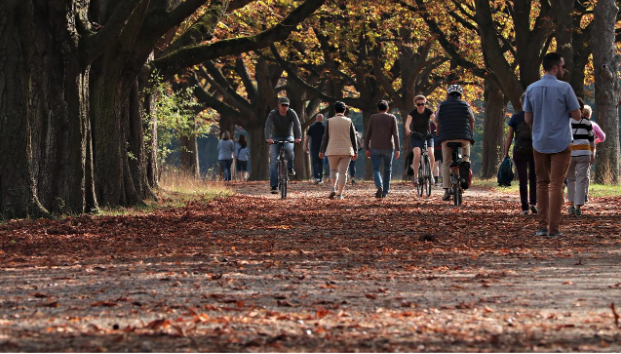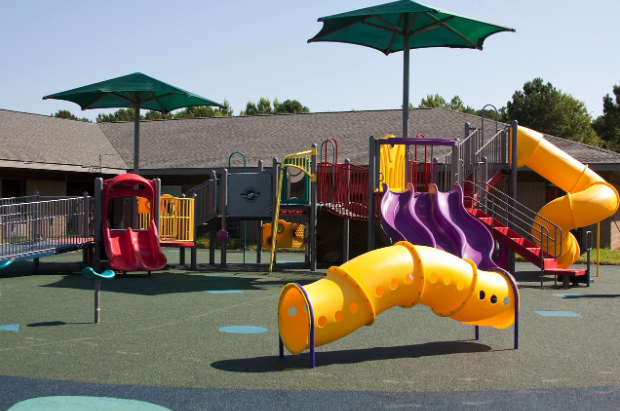- Mon-Fri 9am-5pm EST
- 888-663-4621
Creating Secure Sanctuaries: Ensuring Public Park Safety
Public parks stand as havens of fun, relaxation, and community interaction. They are cherished locales where individuals of diverse backgrounds can escape the urban bustle, engage with nature, and foster connections with fellow residents. However, as these oases of greenery and respite attract people from all walks of life, ensuring public park safety becomes paramount. The harmony between providing open and inviting spaces while safeguarding visitors and their well-being is a delicate balance that requires careful consideration. We delve into the multifaceted realm of public park safety – understanding its significance, analyzing potential challenges, and exploring effective strategies to cultivate secure and welcoming environments for everyone. As we navigate the intersections of urban planning, community engagement, law enforcement, and technological advancements, we gain insight into how modern society can continue embracing public parks' joys without compromising safety. In addition, we address whether public parks are safe enough for anyone and explore how communities can create open, welcoming, and inclusive environments that help everyone get back to enjoying our public parks more fully.
A strategic approach to design and maintenance is paramount when crafting safe and inviting public parks. By integrating measures that cater to visitor comfort, and overall well-being, communities can foster vibrant outdoor spaces that stand as beacons of recreation. This section delves into the core principles of building safe parks, addressing key aspects such as heat management, vigilant maintenance, security systems, and optimal lighting.
Understanding the impact of rising temperatures in urban areas and developing parks that provide refuge from scorching heat is crucial. An effective strategy involves planting an abundance of trees throughout the park. These natural canopies offer shade and cooler microclimates, encouraging visitors to engage in outdoor activities without enduring extreme temperatures. Furthermore, well-designed, structured shelters can offer respite from the sun and inclement weather, enhancing the overall comfort of park-goers.
Maintenance for amenities and structures is more than just a routine chore—it's a cornerstone of safety. Employing dedicated full-time maintenance personnel ensures that swings, slides, benches, and other features remain in optimal condition. Regular inspections and timely repairs are pivotal in preventing accidents caused by malfunctioning equipment. This commitment to maintenance underscores the park's commitment to visitor safety and enjoyment.
A proactive approach to park safety is essential in a world where vigilance concerns are paramount. Integrating a comprehensive security system provides a strong deterrent against criminal activities and ensures a rapid response to emergencies. Surveillance cameras positioned at strategic points within the park discourage unlawful behavior and offer crucial footage for identifying and addressing incidents. This systematic vigilance approach fosters an environment where visitors can explore, play, and relax with peace of mind.
An often-overlooked yet critical element of park safety is lighting. Adequate illumination along pathways and within parking lots is indispensable in preventing accidents, deterring illicit activities, and fostering a welcoming atmosphere during evening hours. Well-lit areas empower park-goers to traverse the park confidently, promoting vigilance while minimizing the risk of tripping or stumbling.
The foundation of a safe park rests upon a holistic approach that considers its visitors' comfort, vigilance, and well-being. By intertwining strategies for managing heat, maintaining equipment, implementing safety systems, communities can create public parks that transcend their purpose as mere recreational spaces. These parks become symbols of community care, offering a haven where families, friends, and individuals of all ages can connect, play, and rejuvenate while feeling secure and supported.

When it comes to public park safety, a comprehensive vigilance strategy is paramount. Implementing measures to safeguard park-goers and deter potential risks requires a combination of proactive steps. Here are four key elements that constitute an effective safety plan:
Installing surveillance cameras strategically positioned throughout the park is pivotal in maintaining vigilance. These cameras not only deter criminal activities but also provide valuable footage for investigations should any incidents occur. With the ability to monitor various areas simultaneously, surveillance cameras significantly enhance the overall safety net of the park.
Hiring full-time vigilance personnel contributes to a visible and authoritative presence within the park. These trained professionals are equipped to respond swiftly to emergent situations, ensuring visitors feel secure and confident during park visits. Their vigilant patrol and interaction with the public foster a sense of safety and order.
Clearly defined and prominently displayed park rules are a foundation for maintaining a safe environment. Enforcing these rules consistently helps prevent undesirable behaviors and sets expectations for visitors. Park staff, including safety personnel, play a pivotal role in ensuring that regulations are adhered to, further reinforcing the atmosphere of safety.
The principle of visibility is integral to a secure park environment. Designing the park layout to maximize sightlines and minimize hidden or secluded spots reduces the opportunities for illicit activities. Unobstructed lines of sight from key vantage points, such as pathways and seating areas, empower visitors and safety personnel to promptly identify and address potential risks.
These safety components within a public park create a robust framework that minimizes vigilance vulnerabilities. Surveillance technology, human presence, rule enforcement, and design considerations contribute to an environment where safety takes precedence. Through collaborative efforts, parks can become safe havens where individuals can enjoy outdoor activities with peace of mind.
One of the paramount steps in maintaining secure and enjoyable public parks is carefully selecting and training park staff. These individuals play a pivotal role in upholding safety standards and creating a welcoming environment for park-goers. To this end, a meticulous hiring process involving background checks, driver history assessments, and comprehensive training is imperative.
Before entrusting individuals responsible for park maintenance, vigilance, and visitor assistance, it is essential to conduct thorough background checks. This step ensures that prospective employees have no history of criminal behavior that could compromise the well-being of park visitors. By verifying candidates' backgrounds, park management can guarantee that only trustworthy individuals are granted access to sensitive areas and entrusted with the public's safety.
For staff members operating vehicles within the park premises, such as maintenance teams and safety personnel, evaluating their driving history is critical to the hiring process. This assessment aims to identify any previous vehicular violations or accidents, enabling park management to make informed decisions about the suitability of candidates for positions involving driving responsibilities. By examining driver histories, potential risks associated with on-site vehicle operations can be minimized, ensuring the safety of both park staff and visitors. https://www.ecolife.zone/national-parks-and-reserves

Equipping park staff with the necessary skills and knowledge to handle various situations is integral to creating a safe and well-managed park environment. Proper training enhances the effectiveness of park personnel and instills confidence in visitors that their safety is a top priority. Training programs should cover various topics, including emergency response protocols, conflict resolution, first aid, and effective communication. By providing comprehensive training, park management ensures staff members are equipped to promptly and professionally address diverse challenges.
The hiring process for park staff is a multifaceted endeavor that significantly impacts park visitors' safety and overall experience. Background checks safeguard against potential risks by screening out individuals with a history of criminal behavior. Driver history assessments minimize the potential dangers associated with on-site vehicle operations, ensuring the safe movement of staff and equipment. Comprehensive training equips staff members with the skills and confidence to manage various situations effectively. By implementing these rigorous processes, park management establishes a strong foundation for maintaining safety, vigilance, and the positive atmosphere that public parks are known for.
Playgrounds are the heart of public parks, providing a space for children to play, learn, and grow. As guardians of these cherished areas, it is paramount to maintain a safe environment that minimizes risks and ensures the well-being of young park-goers. This section delves into the critical aspects of playground safety, emphasizing the importance of visibility, regular equipment inspections, and the installation of cushioned floor surfaces.
A key factor in playground safety is the ability of caregivers and parents to supervise children at all times. To achieve this, playgrounds should be designed with optimal visibility in mind. Placing play structures, seating areas, and pathways should allow for clear sightlines, enabling adults to watch children engaged in activities. This design principle fosters a safer play environment and instills confidence in parents that their children can explore and interact without straying out of sight.
Regular inspections of playground equipment are integral to maintaining a hazard-free play space. Play structures, swings, slides, and other apparatus should be thoroughly examined for signs of wear, damage, or malfunction. These inspections should occur consistently, ideally conducted by trained maintenance personnel, to identify potential hazards before accidents can occur. Swift repairs or replacements of faulty equipment components ensure that children can enjoy their playtime without unnecessary risks.

Safety beneath playground equipment is just as crucial as the structures themselves. Cushioned floor surfaces serve as a protective barrier that minimizes the impact of falls, reducing the likelihood of injuries. Materials such as rubberized tiles, engineered wood fiber, or poured-in-place rubber provide shock absorption, helping to cushion the force of a child's fall. Properly installed cushioning materials create a forgiving surface that enhances safety and encourages children to confidently explore and engage in physical activities.
Incorporating these elements of playground safety safeguards children and promotes a positive play experience for youngsters and their caregivers. Combining unobstructed visibility, proactive equipment inspections, and cushioned surfaces creates an environment where children can flourish, develop essential motor skills, and build social connections with peers. Playground safety is a paramount consideration in the design and maintenance of public parks.
Ensuring the safety of public parks is a shared responsibility encompassing a range of considerations. As these vital green spaces continue to play a crucial role in enhancing community well-being, it is imperative that all stakeholders, including local governments, law enforcement, park management, and the community at large, collaborate effectively to create an environment where safety is a priority. By implementing a multifaceted approach that combines proper design, regular maintenance, adequate lighting, strategic vigilance measures, and community engagement, we can foster an atmosphere of vigilance and enjoyment for everyone. Recognizing that no one-size-fits-all solution exists, each park needs to be evaluated individually to identify specific safety challenges and tailor interventions accordingly.
Embracing technological advancements, such as smart surveillance systems and mobile apps for reporting incidents, can significantly enhance our real-time ability to monitor and respond to potential safety concerns. Equally important is promoting community ownership and engagement, bolsters a sense of responsibility and creates a network of vigilant individuals dedicated to upholding park safety. The success of public park safety initiatives hinges on a collective commitment to a safe and inclusive environment. By valuing collaboration, innovation, and the well-being of all park visitors, we can ensure that these communal spaces remain cherished and thriving hubs of recreation, relaxation, and connection for generations to come.
You must login to post comments.